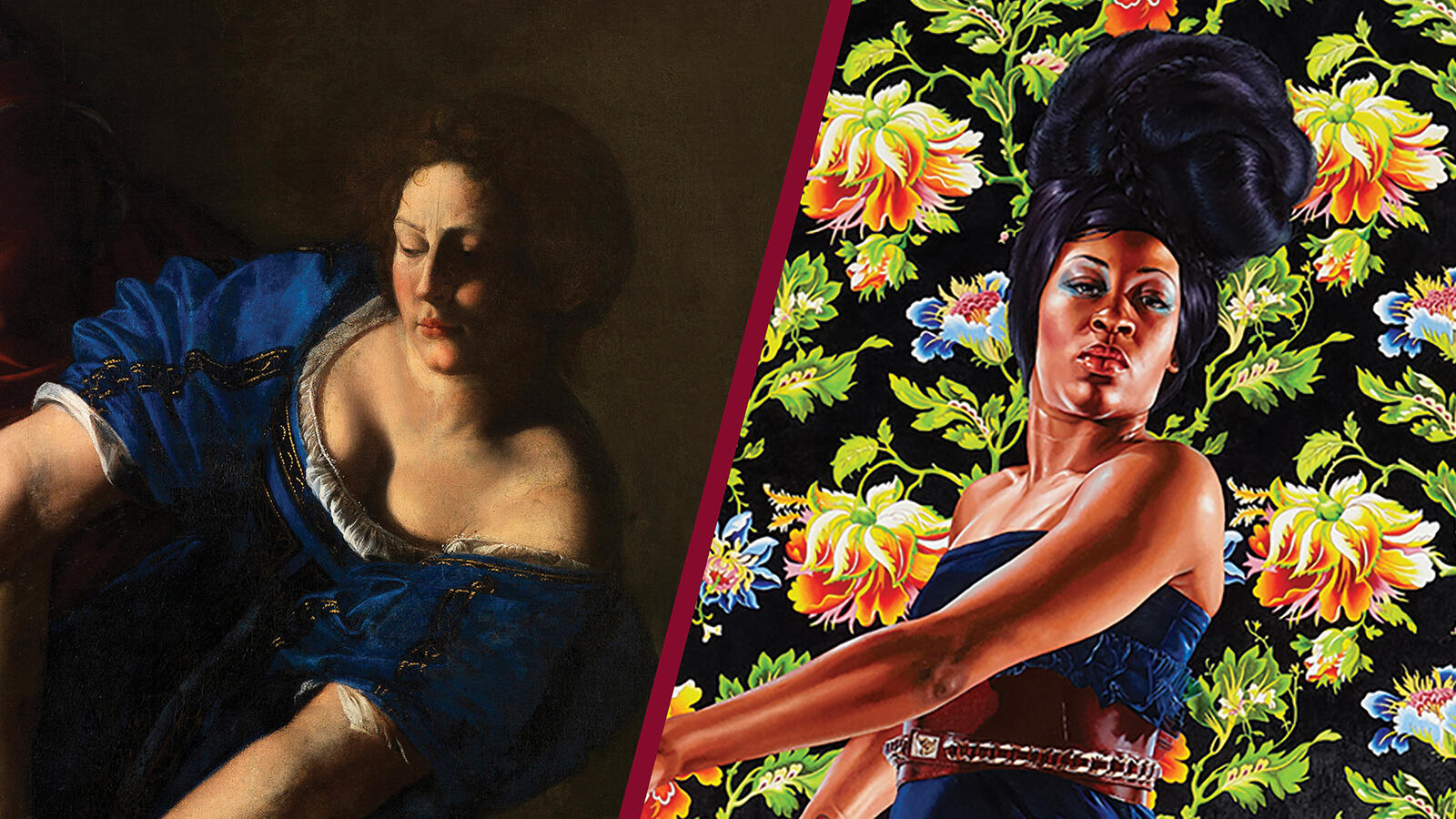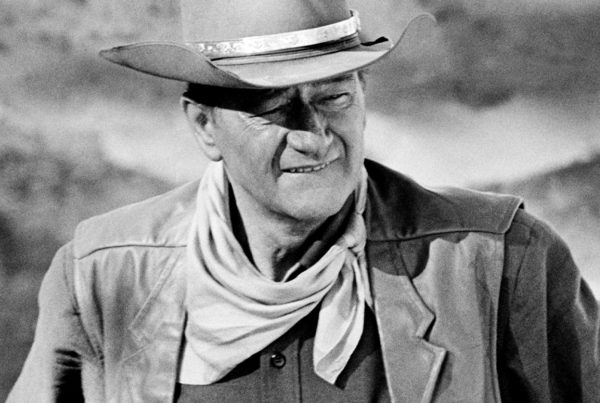The Kimbell Art Museum presents two paintings in conversation in their new focus exhibition, SLAY: Artemisia Gentileschi and Kehinde Wiley. Painted 400 years apart, both arresting pieces feature representations of the story of Judith and Holofernes from the Old Testament Apocrypha. For the uninitiated, the Kimbell puts it succinctly: “A Jewish town is under attack by the Assyrian army, led by the general Holofernes. Judith, a local widow, dresses in finery and visits the enemy camp with her maidservant under the pretense of helping Holofernes defeat the Israelites.
After he falls asleep, she cuts his head off with his own sword. The army flees in the aftermath, and the Jewish people are liberated by Judith’s courageous act.” Essentially, Holofernes had it comin’, and Judith was the brave, defiant woman for the job. A light story, no?Artemisia Gentileschi’s interpretation, completed in 1617, is in the Italian baroque style of her time, while Kehinde Wiley’s 2012 piece is American contemporary. Each work is striking in its own right.
Gentileschi’s version exhibits a tangle of hands and arms that lends a velocity to the piece; the viewer can feel the push and pull between the aggressor and assailant.
Modernizing historical, white portrayals in art with Black subjects is Kehinde Wiley’s modus operandi, especially on a grand scale– Wi-
Installation view of “SLAY: Artemisia Gentilieschi and Kehinde Wiley.” Photo by Robert LaPrelle, Kimbell Art Museum
Cover images: Artemisia Gentileschi (Rome, 1593–Naples, ca. 1653), Judith and Holofernes, c. 1612–17, oil on canvas. 159 x 126 cm. Inv. Q 378. Napoli, Museo e Real Bosco di Capodimonte (left); Kehinde Wiley (American, born 1977), Judith and Holofernes, 2012, oil on linen, purchased with funds from Mr. and Mrs. Gordon Hanes in honor of Dr. Emily Farnham, by exchange, and with funds from Peggy Guggenheim, by exchange, and from the North Carolina State Art Society (Robert F. Phifer Bequest), 2012. © Kehinde Wiley. Courtesy of the North Carolina Museum of Art and Sean Kelly, New York (right)
ley’s Judith towers over the viewer at ten feet tall. Like Gentileschi’s, Wiley’s version also indicates rapid movement with a Black woman swinging a white woman’s head toward the viewer. In pairing these two pieces, both titled Judith and Holofernes, the Kimbell invites visitors “to reflect on contemporary issues through a historical lens.”
Facing each other in the small exhibition space, the two pieces provoke tough conversations surrounding race, class, gender, oppression, and the imbalanced distribution of power in society. While time has passed and artistic style and media have evolved, the conversation remains as relevant today as it was in Gentileschi’s time.
“The dynamics of power, the struggle for freedom, and the triumph of the disenfranchised are fundamental themes in art and literature through the ages. Seeing these paintings together helps to sharpen our sensibilities and broaden our vision,” says Nancy E. Edwards, Curator of European art and head of academic services at the Kimbell.
Another duality is found in the exhibition’s name, SLAY, which serves both pieces. In regards to Gentileschi, “slay” acts as dramatic, biblical verbiage of yore. It’s simultaneously a nod to African American Vernacular English (AAVE), honoring the nature of Wiley’s work and heritage.
“At the Kimbell, we believe that art enables us to better understand ourselves and our world,” says Eric M. Lee, director of the Kimbell Art Museum. “We invite visitors to SLAY to explore the paintings’ pictorial power and their ability to communicate critical issues across time, place, and culture.”
In 2015, Kehinde Wiley’s provocative works descended on Fort Worth at the Kimbell’s neighbor, the Modern Art Museum, where the artist’s painting Colonel Platoff on his Charger remains in their permanent collection. Don’t miss this fleeting chance to revel in the captivating details and important messaging of Kehinde Wiley’s rendition of Judith and Holofernes. See SLAY for free in the Kimbell’s Louis I. Kahn building until October 9, 2022. Pro Tip: View the ex-

Installation view of “SLAY: Artemisia Gentilieschi and Kehinde Wiley.” Photo by Robert LaPrelle, Kimbell Art Museum
Exhibit on a Friday afternoon so you can enjoy happy hour and live music afterward in the Kimbell Café from 5-7 p.m.
Organized by the Museo e Real Bosco di Capodimonte, the North Carolina Museum of Art, the Kimbell Art Museum, and The Museum Box, SLAY: Artemisia Gentileschi and Kehinde Wiley coincides with special exhibition Murillo: From Heaven to Earth, on view September 18, 2022-January 29, 2023, as well as with the Kimbell’s 50th Anniversary celebration October 4-8, 2022. The museum is open Tuesdays through Thursdays and Saturdays, 10 a.m.-5 p.m.; Fridays, noon-8 p.m.; Sundays, noon5 p.m.; closed Mondays. For more information on the Kimbell Art Museum turn to Key Things to Do on page 13, Calendar of Events on page 18, call 817-332-8451, or visit kimbellart.org.





